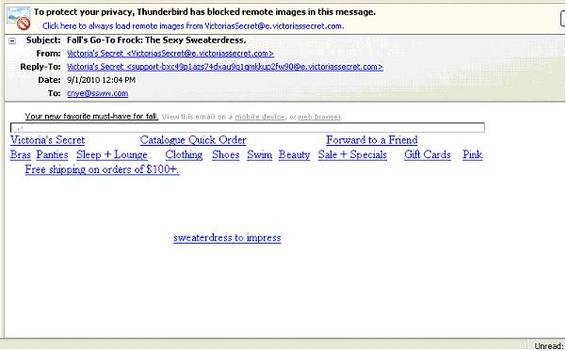I am the email marketing manager for S&S Worldwide, a large retailer of crafts and school supplies. Over the years, I have encountered many “email best practices.” But like Snap Bracelets, Cabbage Patch Kids and Atari, trends change. And email best practices, I’ve learned, do not apply to every company or every situation. What’s important for my company is to always test, to ensure that what works for others also works best for us.
I’ve listed, below, three commonly-held email “best practices” that were not effective for my email marketing programs.
1. Don’t Use Images to Convey Your Main Email Message
Many marketers will tell you to place your primary email message and call-to-action in HTML text, and not in an image. This is something I’ve tested repeatedly, spending hours hand coding campaigns, only to discover my efforts didn’t really pay off. There was never enough of a lift in the optimized versions to warrant the extra time required to create them. For a company that sends several versions of campaigns twice per week, the extra work was not viable. And I’m not alone. A huge amount of big retailers, such as Victoria’s Secret, don’t bother, either.
Screenshot of a Victoria’s Secret email with blocked images.
As a caveat, however, note that transactional or triggered emails definitely warrant the time to design so the messages are clear and obvious with images turned off. Because these messages are so powerful in terms of open rates, click-through and conversions, and because once set up they flow on their own, it makes sense to optimize the creative. Also, if HTML and design resources are abundant at your company, then by all means spend the time to optimize each email creative. I weighed my options, and it just wasn’t worth the time involved.
2. Open Rates Are the Most Important Metric
Open rates are only as useful to the segments you are comparing. And often times with email, there are so many other factors to consider that the open rate tends to lose its meaning. As marketers, part of our job is to simply brand our company or website. Getting your email in someone’s inbox, using your company’s name or URL, is consistently branding your product or services in a similar manner to other media channels. If you aren’t visible in your customer’s inbox, chances are your competitor will be. Sometimes you still accomplish something powerful without the subscriber ever opening the email.
Open rates are an important benchmark for your reporting, but they are only relative to the subscriber base you are segmenting. For example, emailing everyone who has purchased in the last three months will probably have a much higher open rate than emailing subscribers who have never purchased from you. Note these differences when analyzing results.
Check to see subscriber behavior over time. Dig into your email statistics; you may be surprised to see it is not the same 10 to 15 percent of your subscribers that consistently open your emails. In fact, it may be a very different group of people opening every time. Get to know how your open rate churns.
3. Purge ‘Unresponsive’ Subscribers
How do you define unresponsive subscriber? Typically it is a formula of someone who has not purchased, clicked or opened an email from you in a set amount of time. But, my experience is that you should be very careful with that formula.
I recently attended an email marketing conference and listened to a case study of how one company deletes all of its “unresponsive” email subscribers. The company sent three email communications over a short period of time, telling subscribers they had to re-opt in or they would be taken off the list. As a result, the company reduced its subscriber list by about 60 percent. Logically, open and click through rates dramatically improved. But, I wondered what happened to all the other subscribers who may not have opened those emails for valid, explainable reasons? In my experience, there were a good number of viable, active subscribers who were removed that would have preferred to remain subscribed.
To be certain, trimming off the subscriber “dead weight” is a good idea and important in order to maintain deliverability and reputation. Increasingly, ISPs are looking at the frequency at which you email non-responsive subscribers and factoring that into your overall reputation score. A low score could damage the deliverability of your future campaigns.
But there are other options than deleting subscribers. You could, for example, design an email program to accommodate less responsive subscribers. This could include not emailing them as often, or developing strategies and incentives to encourage their reactivations. Additionally, you can create a “global rule” for unresponsive subscribers. This rule could require that every subscriber, regardless of purchase, click or open history, will receive at least one email per month.
Summary
Email marketing is effective for many online retailers. But my experience is there are no universal “best practices” and most every online merchant has different circumstances. Remember to test every campaign and weigh the cost of implementing “best practices” with the return you gain from them.





